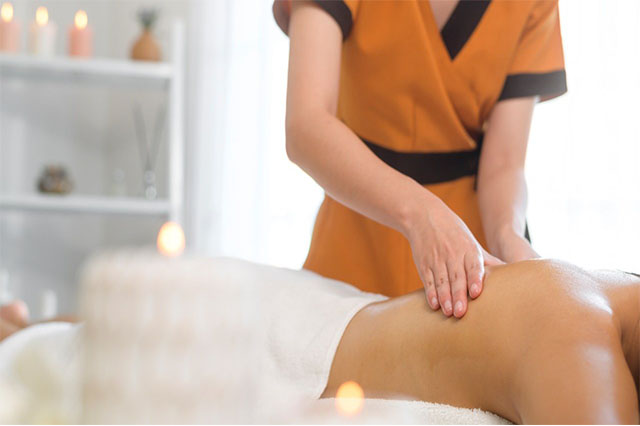
Of course. Here is a comprehensive guide to Deep Tissue Massage, covering what it is, how it works, its benefits, what to expect, and who should be cautious.
What is Deep Tissue Massage?
Deep Tissue Massage is a therapeutic massage technique that focuses on the deeper layers of muscle and connective tissue (fascia). Unlike a Swedish massage, which is primarily for relaxation and improving surface-level circulation, deep tissue massage aims to break down chronic muscle tension and adhesions (bands of painful, rigid tissue) that can disrupt circulation, cause inflammation, and limit movement.
The therapist uses slow, deliberate strokes and deep finger pressure to target these inner layers, often focusing on specific areas of discomfort.
How It Works: The “Why” Behind the Pressure
The goal isn’t just to press hard; it’s to apply specific pressure to achieve specific results:
- Breaking Down Adhesions: Over time, muscles can develop adhesions—knots or scar tissue—that stick muscle fibers together, causing pain and restricting movement. Deep tissue work physically breaks these adhesions apart, restoring normal function.
- Releasing Muscle Tension: It addresses chronic tension held in the sub-layer of muscles, often due to repetitive strain, poor posture, or injury.
- Restoring Fascial Health: The fascia is a web-like connective tissue that surrounds your muscles. When it becomes tight or restricted, it can cause pain far from the original site. Deep tissue massage helps to stretch and loosen this fascia.
- Improving Blood and Lymph Flow: By releasing tension, it allows for better circulation, which brings oxygen and nutrients to the tissues and helps flush out toxins and metabolic waste.
Key Benefits
People seek deep tissue massage for a variety of reasons, including:
- Chronic Pain Relief: Effective for persistent pain in the neck, upper and lower back, and shoulders.
- Rehabilitation from Injury: Helps break down scar tissue after muscle strains or tears.
- Improved Mobility and Range of Motion: By releasing deep-seated tension, joints can move more freely.
- Reduced Inflammation: Can help with conditions like tendonitis and arthritis by improving circulation.
- Postural Improvement: Targets muscles that have become shortened and tight due to poor posture (e.g., from sitting at a desk all day).
- Management of Oxidative Stress: Some studies suggest it can lower biochemical markers of stress in the body.
What to Expect During a Session
- Consultation: The therapist will discuss your medical history, areas of pain, and your goals for the session.
- Preparation: You will typically undress to your comfort level (like for a Swedish massage) and lie on a massage table under a sheet. The therapist will only uncover the part of the body they are working on.
- The Massage Itself:
- Pressure: The therapist will use fingers, knuckles, forearms, and elbows to apply slow, focused pressure. The strokes will be deeper and more specific than a relaxation massage.
- Communication is Key: You will likely feel some discomfort, especially on knotted areas. However, it should not be excruciating pain. A common guideline is that it should be a “good hurt”—a sensation of pressure and release. You must communicate with your therapist. Use phrases like:
- “That’s the right spot.”
- “The pressure is a bit too much, can you lighten up?”
- “That’s causing sharp or shooting pain.” (This is a sign to stop or adjust).
- After the Massage:
- Soreness: It is very common to feel some soreness for 24-48 hours after the massage, similar to post-workout soreness. This is a normal part of the healing process as your body flushes out the released toxins and inflammation.
- Hydration: Drink plenty of water afterward to help your kidneys process and eliminate these released toxins.
- Rest: Avoid strenuous activity for a day or two to allow your body to recover.
Deep Tissue vs. Swedish Massage: A Quick Comparison
| Feature | Swedish Massage | Deep Tissue Massage |
|---|---|---|
| Primary Goal | Relaxation, stress relief | Rehabilitation, pain relief, release chronic tension |
| Pressure | Light to medium | Medium to very firm |
| Technique | Long, gliding strokes, kneading | Slow, deep strokes, friction, focused pressure |
| Sensation | Soothing, relaxing | Intense, therapeutic, can be uncomfortable |
| Best For | General relaxation, improving circulation | Specific aches, pains, and limited mobility |
Who Should Be Cautious? (Contraindications)
While beneficial for many, deep tissue massage is not for everyone. Always consult your doctor first if you have:
- Recent injuries or surgeries
- Osteoporosis
- Blood clots (thrombosis)
- A bleeding disorder or are on blood thinners
- Heart disease
- Cancer (unless approved by an oncologist)
- Pregnancy (seek a therapist trained in prenatal massage)
- Inflammatory conditions like phlebitis
- Fever or contagious illness
Finding a Qualified Therapist
It is crucial to see a Licensed Massage Therapist (LMT) or Registered Massage Therapist (RMT) who is trained in deep tissue techniques. Don’t be afraid to ask about their experience and training.
In summary, deep tissue massage is a powerful therapeutic tool for addressing specific musculoskeletal issues. While it involves more intense pressure than a relaxation massage, the goal is healing and long-term pain relief, not just momentary comfort. Clear communication with your therapist is the key to a safe and effective session.
